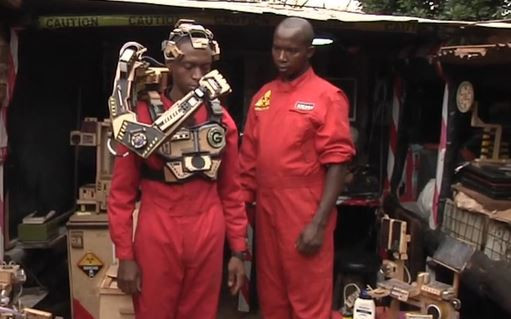Invented by David Gathu and Moses Kinyua and powered by brain signals; this Bio-robotic arm prosthesis looks like something out of a sci-fi Hollywood movie, but it is the realistic brainchild of two young kenyan inventors.

The Robotic arm prosthesis, works by converting the brain signals into an electric current by; a “NeuroNode” biopotential headset receiver. This electrical current is then driven into the robot’s circuitry, which gives the arm its mobility.
The arm has several component materials including recycled wood and moves vertically and horizontally.
Interestingly, many people are amazed by the technical knowledge of these two Kenyan young boys; who reportedly did not acquire any form of tertiary education.
When asked about what their motivation was, Moses explained that they have found out that there are almost one million people living without an upper limb or a lower limb; and was wondering how to assist them to “locomote in their daily activities.” This led to the discovery of the groundbreaking solution.
Explaining the technicalities behind the innovation, David said that; all humans have certain activities going on in the head; a device was created to pick such signals and pass it through certain defined processes before feeding the robotic arm.

They however disclosed that they do not have the capacity to produce with the right high-quality materials; currently, they produce the robotic arms from discarded computer parts, “plywood, plastic and leather from bags”.
“If we get the right funding with the right laboratory, with the right ground of getting the resources and the funding to move on with our dream; that will be the greatest joy in our heart,” Moses said in an interview with a BBC reporter.

